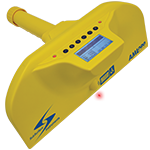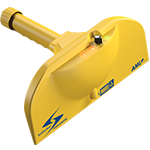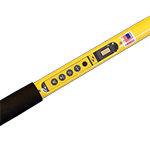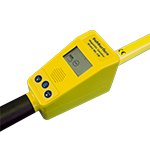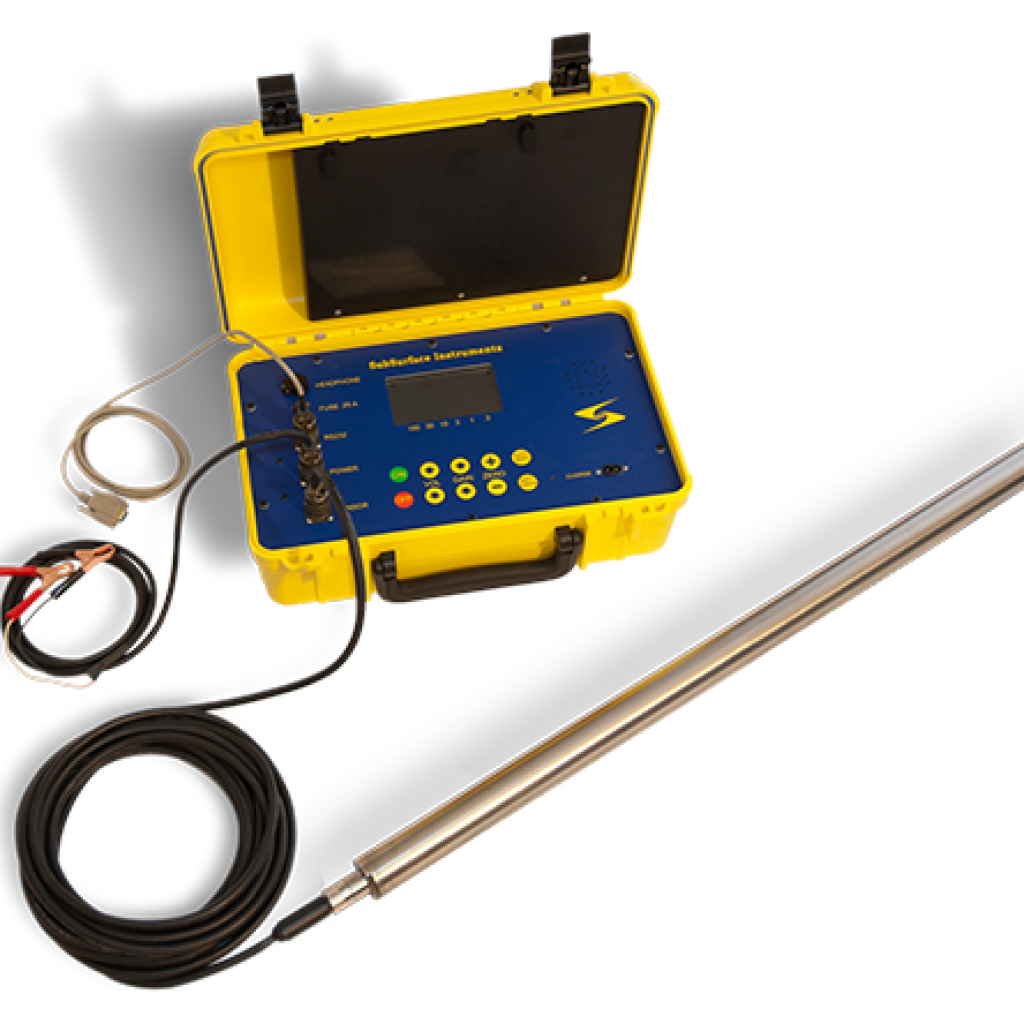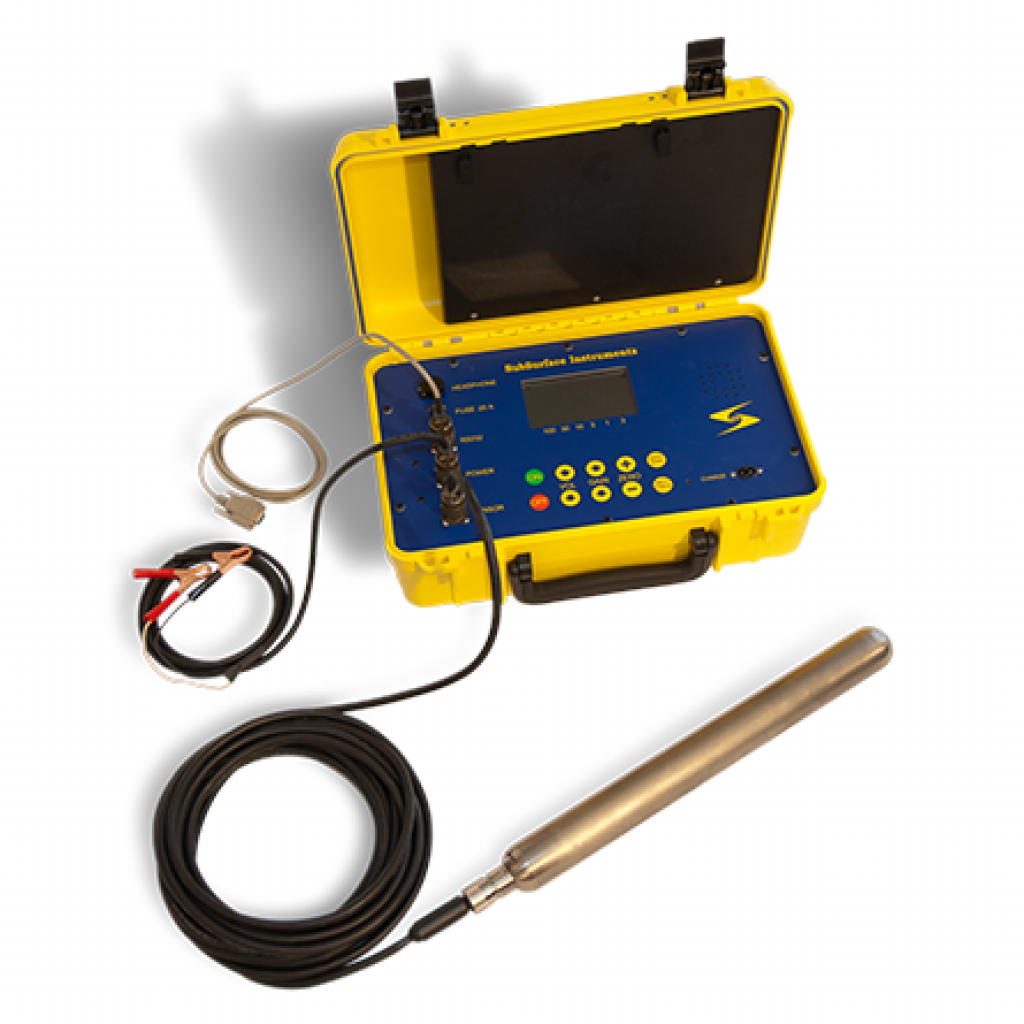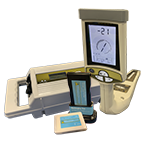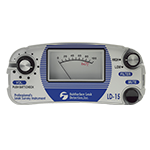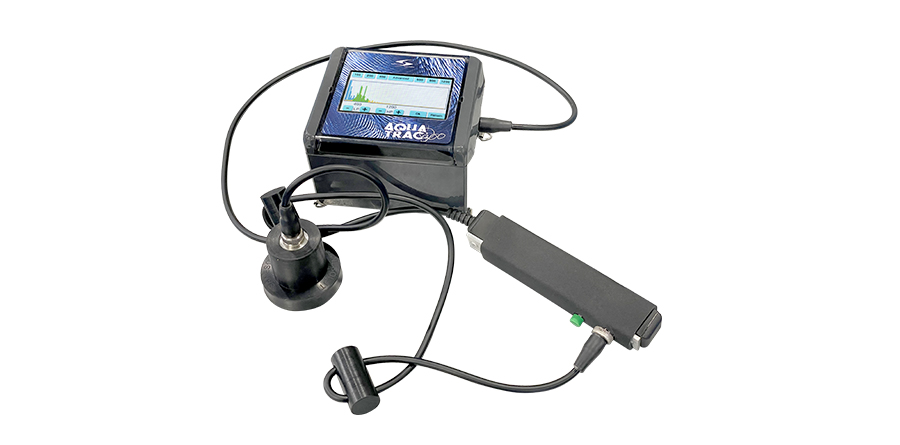AML Frequently asked questions
Q. What will the AML locate?
The AML will locate anything with and edge larger than 15″ such as a pipe composed of PVC, HDPE, Transite, Copper Steel, Wood, Concrete, Clay, Cast Iron, etc.
Q. How does it locate? What is the theory behind it?
The AML works on finding changes in density, When the AML scans an area, it recognizes a change and refracts the signal of the object back to the four receiver antennas in the AML. If antennas on both sides of the AML receive refracted signal, both red lights will turn on. If only antennas on one side of the AML receive refracted signal, then only that side red light will turn on.
Q. How deep will it locate?
On average, a 4″ pipe can be found to depths of at least 12′ deep, larger pipes may be found deeper, smaller pipes a little less deep, (The type of soil may play a roll in the locate depth).
-DOES SIZE OF THE PIPE WILL CHANGE DEPTH?
Yes, smaller diameter pipe will be more difficult to find at deeper depths. Larger diameter pipes are going to be easier to be found at any depth up to approximately 20′.
-HOW DO YOU DETERMINE DEPTH?
We use the triangulation method to calculate the approximate depth of a pipe or cable. This consists on marking the location of the edges of the pipe directly above it, holding the AML unit in a perpendicular angle to the floor, then lowering the handle of the unit, until a 45° angle of the blade face is reached, work your way back.
Q. What are the differences in the settings?
The higher the number, the “hotter” or more sensitive the AML’s signal is.
-HOW DO I CHOOSE A GAIN SETTING?
When scanning above concrete, black top or hard gravel roadways, use the sensitivity level at 5-9 these standard soil conditions will require a higher sensitivity level. Use a lower sensitivity level 1-6 when scanning over parking lots, driveways, sidewalks, etc.
-WHICH GAIN SETTING IS HOTTEST/COOLEST?
9 is the “hottest” or “most sensitive” setting, 1 is the “coolest” or “less sensitive” setting.
Q. How do I determine size of a pipe or an object?
Locate one edge of the pipe as accurately as you can, remembering the 10° angle of the blade and mark it with paint; then scan for the other edge of the pipe -locate it as accurate as you can- mark this second spot with paint, the distance between the two paint marks will be the approximate diameter of the pipe.
Q. What does it mean when both red lights are on?
It means that an object of 15″ or more has been located, both red lights and an audible signal will be activated, as well as the red laser point that will indicate the center point on the ground where the density change has been located, at this point the depth of the density change may not be known.
Q. When I have to be extremely accurate, how should I hold the AML Pro?
To be the most accurate, the handle of the AML most be hold at a 10° upward angle, with the battery cap at the higher end of the angle, allowing the blade face to be perfectly perpendicular to the ground.
-SHOULD I USE THE HANDLE AS MY REFERENCE?
Handheld it at a 10° angle from the ground. The AML blade face is built with a 10° angle from the handle, to eliminate false reading that can be created by the feet of the technician operating the unit.
Q. How will I know when the pipe ends or comes to a "T"?
Identifying the end of a pipe is easy. As you follow the edge of the pipe, pay attention to the red lights, when one of them turns off it may indicate the end of the pipe, back up the unit until both lights are on again and slowly move the unit until the light goes off, now turn the unit left or right using the side of the AML where the light is still on as a pivot point, keep turning and if both lights come on again it means the pipe made a 90° turn or you found a “T”. Continue scanning the pipe with the locating method you were using before.
Q. What kind of soil conditions may affect the AML's performance?
These soil conditions could be: Rocky regions, heavily wooded areas, corn fields, landfills, high grassy areas and areas with a lot of bushes.
Q. How do I know when to change batteries or connect the external battery pack?
In the AML the green power light, will turn red and green intermittently when the power is low.
In the AML Pro the screen will display a message of LOW BAT in the upper right hand corner, once the message is displayed you have 5 minutes to replace the battery before the unit turns it-self off. Always turn the unit off before replacing batteries or connecting the external battery to the USB port.
-HOW LONG WILL THE BATTERIES LAST?
Battery will last up to 10 hours of full use, depending on model.
Q. When on the edge of a pipe, why do I lose signal just by raising or lowering the AML by an inch or two?
Loss of signal may occur when directly above an edge of a pipe due to the refracted Radio signal being read by the antennas. There are areas of the radio frequency that the antennas miss, creating null zones as the unit is raised or lowed. Both lights will come on then go off approximately every 2 inches when the antennas are located inside of these null zones. A gentle flicker up and down or a vertical circular motion will allow the pipe to be accurately re-located.
Q. Do these locators need to be calibrated or sent in for calibration?
AML is calibrated from factory, it is possible to recalibrate when attached to a computer with the SubSurface Instruments auto-calibrate software, you can either send the unit back to factory to re-calibrate or download the software from www.ssilocators.com data base.
AML Pro has it’s own calibration check utility built in. Press and hold the TX button for 3 seconds, then release and direct the AML’ss blade to an unobstructed sky, hold that position for approximately 10 seconds, the screen will display a PASS or FAIL message, if the screen display FAIL message, go to MENU>CALIBRATE and repeat the previous steps, this time the process will take a few seconds longer, the unit will run a calibrate routine to bring the unit to its factory calibration state.
Q. Can I use the AML in the rain?
All highly sensitive digital locators are best not used in heavy rain. Do not use for long periods of time in the rain, cover the unit with a clear piece of plastic. These units are water resistant, but not water proof. If the AML is put in the carrying case wet, is a recommended practice to take the unit out of the case and let it dry over night, with the battery sleeve removed and the battery cap left off.
Q. Why do I get a reading in spots where I know there are no pipes or cables?
The AML Pro is a highly sensitive unit when it’s set to the higher level of sensitivity. It may detect very small changes of density down to approximately 20′ of depth. Once you find the edge of your targeted object, use the lowest level possible that will still locate that objects edge. This will reduce the possibility of getting unwanted, inaccurate locates.





























